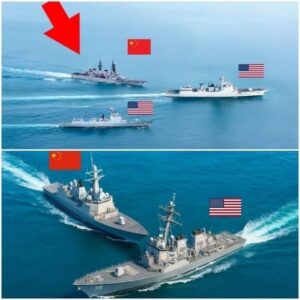
June 14, 2025 — South China Sea.
The USS Princeton, a steel giant of American power, sliced through the waves beneath a blinding blue sky. At 0923 hours, her SPY radar picked up something—a faint blip, steady and deliberate. Moments later, the identification came through: a Chinese Type 052D destroyer, Jon Chong, shadowing them from 200 kilometers away.
Then, without warning, the Chinese vessel increased speed—from 18 to 30 knots. Whatever this was, it wasn’t routine anymore. It was a test of nerves.
Onboard the Jon Chong, the captain had just received new orders from Beijing:
“Intercept the Americans. Make them blink first.”
But Beijing was about to learn what happens when you challenge the U.S. Navy in open waters—an act as reckless as juggling live grenades.
By 0926, the Princeton’s radar operators confirmed the threat. Inside the Combat Information Center, every screen glowed with tracking data. The Tactical Action Officer, calm but alert, studied the destroyer’s course. He knew one thing: the Princeton carried 122 vertical launch cells, each one capable of unleashing devastation.
The Jon Chong kept advancing, its YJ-18 anti-ship missiles ready to strike—fast enough to reach the Princeton in under four minutes. But the Americans weren’t defenseless. Their SM-6 interceptors could destroy those missiles long before impact.
It had become a silent standoff—one false move, and the South China Sea could ignite in seconds.